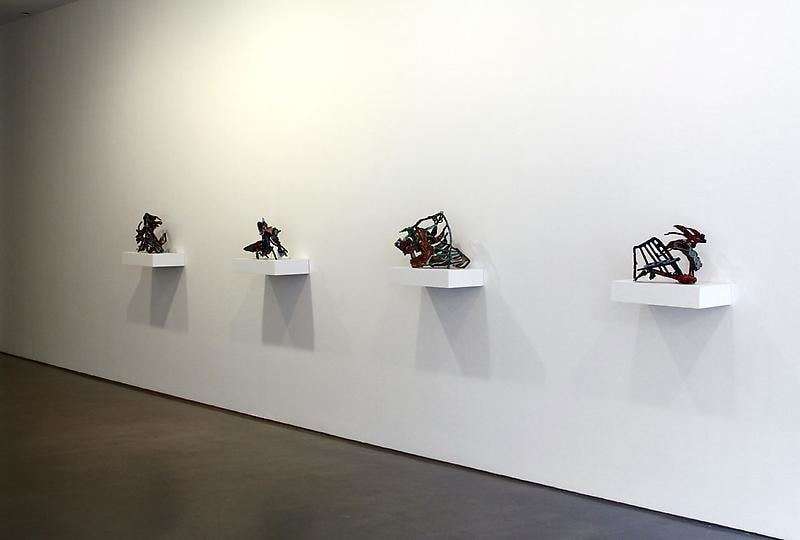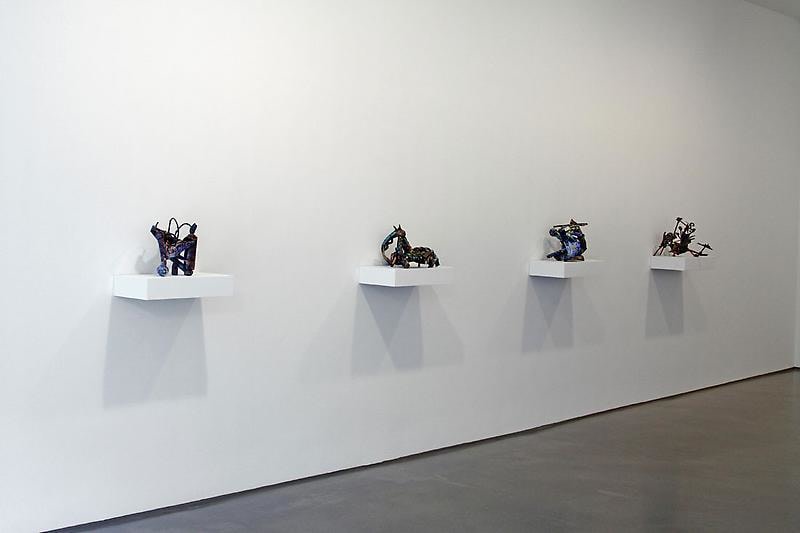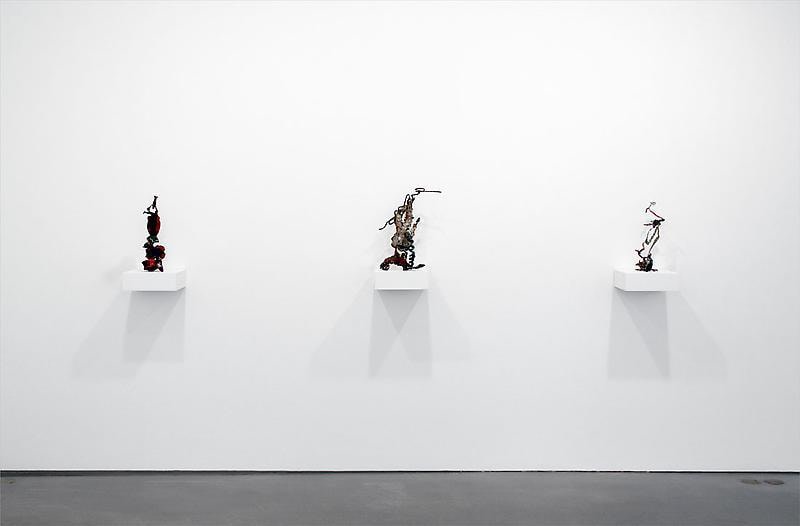NANCY GRAVES
September 17 – October 24, 2009
Press Release
The lesson of her work is that there is nothing in the world that cannot lead a second and more expansive life, if only someone is to release it from its everyday connotations. -John Russell, The New York Times, March 29, 1987
New York, New York – Ameringer | McEnery | Yohe is pleased to announce the opening of an exhibition of work by Nancy Graves (American; 1939 – 1995). Nancy Graves opens to the public on Thursday September 17 and will be on view through October 24, 2009.
The exhibition will focus on Nancy Graves’s tabletop, polychrome, bronze sculptures of the 1980s. During these years, Graves used bronze casting to create elements from a variety of organic and manufactured items which she then arranged, welded together, and painted with rich and colorful patinas. Graves’s assembled sculptures in this body of work defy gravity and challenge the very structure of metal sculpture. In an interview with Robert Hughes in The Sculpture of Nancy Graves; A Catalogue Raisonné Graves explains, “I try to defy, conceptually and visually, the logic of building. My sculptures aren’t evenly balanced in the obvious visual way, they’re balanced by imbalance.”
Nancy Graves was born in Pittsfield, Massachusetts in 1939. She studied at Vassar College and later at Yale University’s School of Art and Architecture, in a class that included Richard Serra, Chuck Close, Janet Fish, Brice Marden and
Judy Pfaff. Nancy Graves first came to prominence with her groundbreaking series of camels- life like constructions of wood, burlap, hair and wax- that resembled the artificial animals found in natural history displays. In 1969 she became the first woman to have a solo exhibition at the Whitney Museum. Nancy Graves was an avant-garde filmmaker and extensive world traveler who incorporated elements of classical antiquity, as well as Ancient Egyptian, African, Japanese, Korean, and Indian art into her work. She died of cancer in 1995.
Nancy Graves’s sculpture, paintings and works on paper may be found in the collections of numerous museums including the Museum of Modern Art, the Metropolitan Museum of Art, and the Whitney Museum of American Art in New York; the Art Institute of Chicago; The National Gallery of Art and the Hirshorn Museum and Sculpture Garden, the Smithsonian Institution in Washington, DC; and the National Gallery of Canada, Ottawa.


